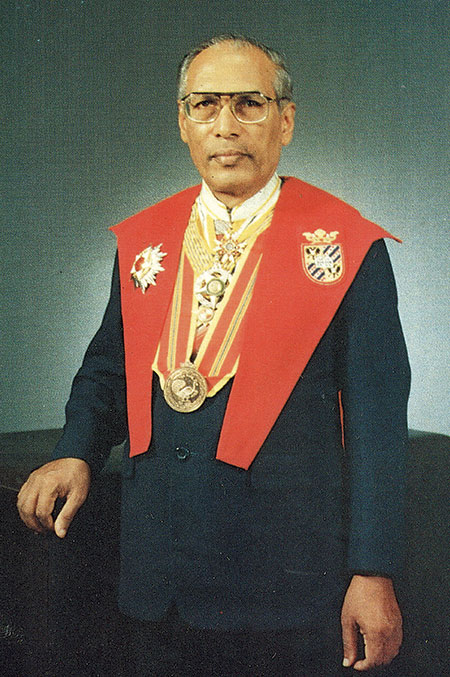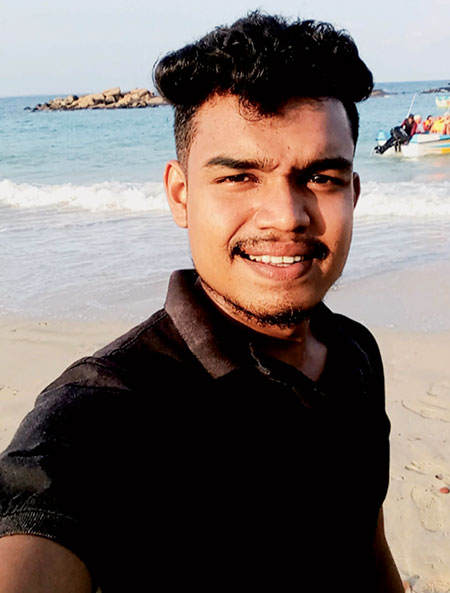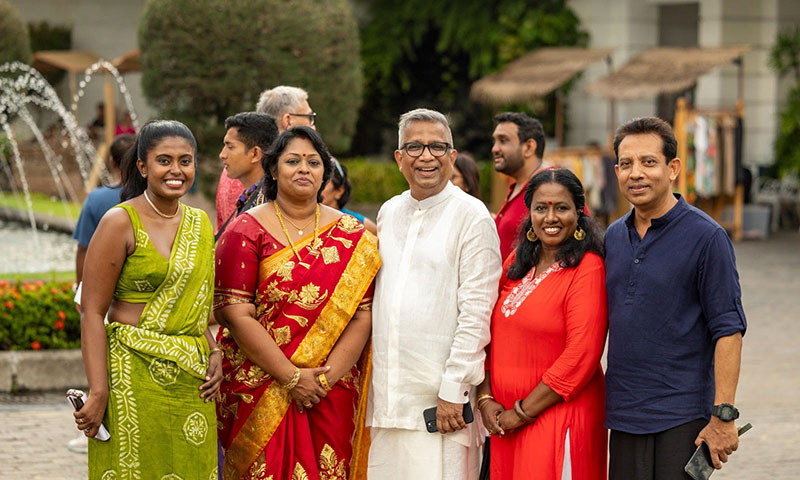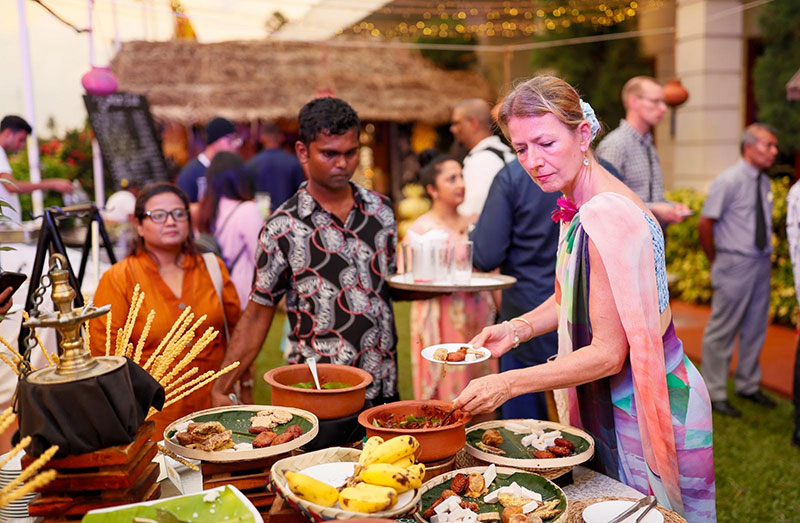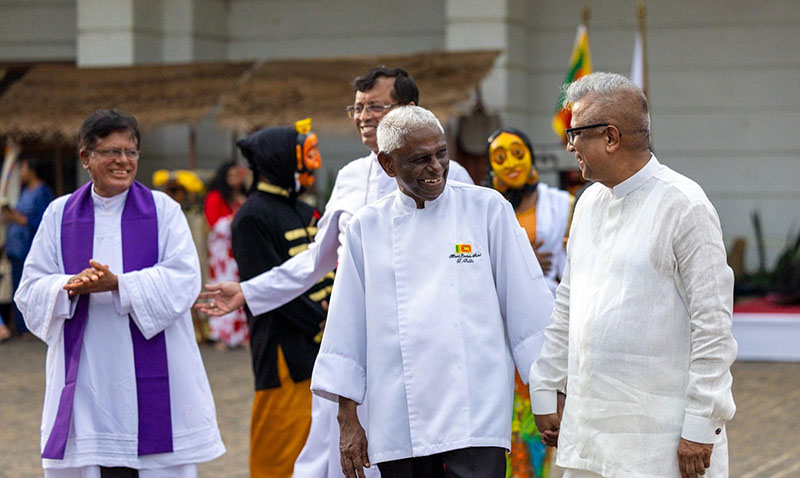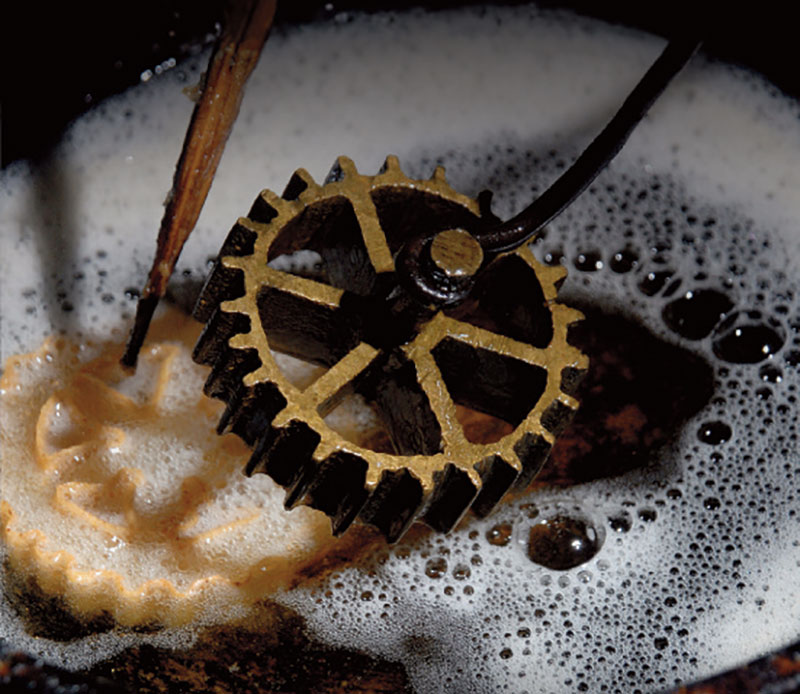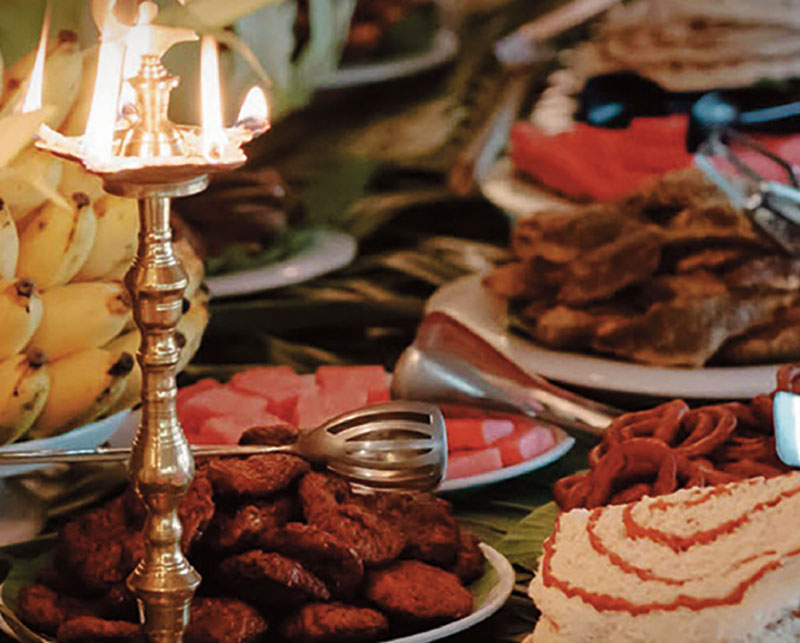Life style
Sri Lanka Eye Donation Society gifts sight to the world
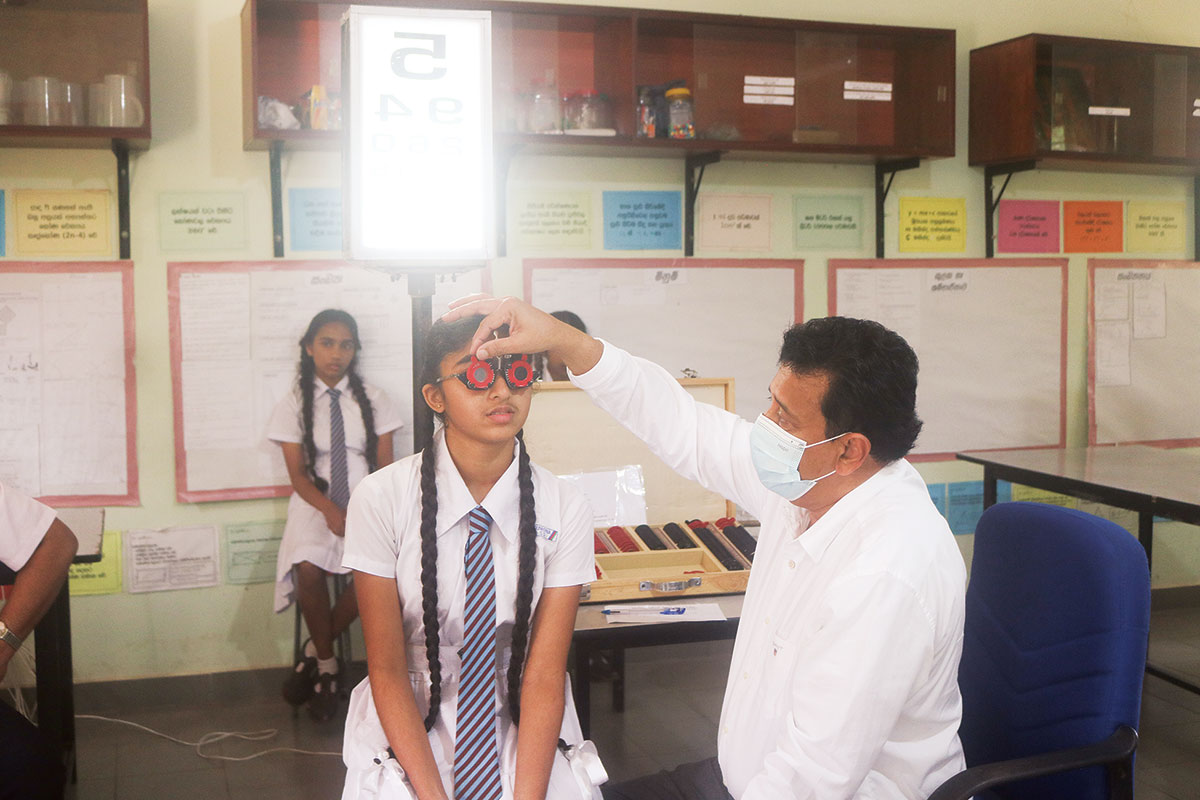
Founded by the late Dr. Hudson Silva, the Sri Lanka Eye Donation Society (SLEDS) which is nearing 65 years is the first of its kind in the world to provide corneas completely free of charge to locals as well as foreigners through its International Eye Bank. Among the donors of eyes are several Presidents and Prime Ministers of the country. The other affiliated bodies of SLEDS are the Dr. Hudson Silva Memorial Eye Hospital and the Human Tissue Bank which provide a yeoman service to the public.
BY RANDIMA ATTYGALLE
At age 18, Eranga Madushan’s future looked bleak with keratoconus (a disorder of the eye that results in progressive thinning of the cornea) claiming both his eyes. Thanks to his physician’s recommendation for a corneal transplant, Eranga was fortunate to have received suitable corneas from the Eye Bank of the Sri Lanka Eye Donation Society which were successfully transplanted at the Kandy National Hospital.
Now 22-years old, this young man from Minipe has successfully finished his education and is employed. “I even passed the vision test and got my driving license – all made possible thanks to the noble service of the Sri Lanka Eye Donation Society,” says Eranga.
His is one of thousands of such success stories. These exemplify the thought-provoking discourse of Sivi Jathaka story delivered by the Buddha when, in one of his Bodhisathva’s births, he gave away his eyes to a blind beggar. There cannot be a better living testimony to this concept of dana than the Sri Lanka Eye Donation Society (SLEDS), now approaching 65 years.
Giving life to a dead eye
In 1958 Hudson Silva, a medical student started a campaign under the banner, ‘Give life to a dead eye,’ to popularize the donation of eyes after death to obtain corneas for the Colombo Eye Hospital which had long waiting lists for eye replacements but without sufficient donors. Eyes at this point were obtained only from those who died without custodians in hospitals and homes for the elders and executed prisoners.
With the help of newspaper articles and public meetings, Hudson Silva’s campaign continued. By 1961, he had qualified and appointed a resident surgeon at the Colombo Eye Hospital. SLEDS got underway officially in a very small scale on June 11, 1961 at Dr. Silva’s Ward Place home in Colombo. Among the 40 founding members of the Society was Dr. Silva’s mother who pledged her eyes to be donated after death. When she died shortly thereafter, he himself grafted her corneas on the eyes of a poor farmer and thereby restored his sight. In 1965, Prime Minister Dudley Senanayake presiding at the official opening of the International Eye Bank, pledged his eyes after death. After his demise in 1973, his wishes were fulfilled.
With the objective of extending this service to foreigners awaiting eye replacements, Dr. Silva started connecting with senior eye surgeons from various parts of the world. In 1964 he dispatched his first eyes overseas – flying three set of donor eyes packed in dry ice to Singapore’s Government General Hospital. Thus commenced the country’s international eye donations on a Vesak Poya Day when five Singaporeans regained their sight.
Following the wide media coverage this attracted the world over, SLEDS was able to open its doors to the entire world. In the late 70s, on government-donated land on Vidya Mawatha in Colombo 7, SLEDS’ headquarters along with its Eye Bank were relocated and the present building was built with the help of Japanese funds. It was opened by the then Prime Minister R. Premadasa in 1984.

President William Gopallawa at the event of donating the the land at Vidya Mawatha, Colombo to set up SLEDS
Global demand
Globally, at least 2.2 billion people have a near or distance vision impairment, according to the WHO statistics. In at least one billion of these, vision impairment could have been prevented or is yet to be addressed. The leading causes of vision impairment and blindness at a global level are refractive errors and cataracts.Vision impairment, according to the WHO, poses an enormous global financial burden, with the annual global cost of productivity losses estimated to be US$ 411 billion.
The demand for corneal transplants (keratoplasty) is on the rise with increasing prevalence of eye diseases and the rising elderly population. “Global statistics indicate that over 12.5 million people worldwide are waiting for corneal transplants. We are committed to bridge this gap every year by donating corneas and to date our International Eye Bank had donated 95,151 corneas to foreigners from 57 countries. In addition, nearly 60,000 locals including many soldiers injured in combat, have received corneas,” says the Senior Manager of the SLEDS’ International Eye Bank, J.S. Matara Arachchi.
Donor registration
Having ‘grown’ with the institution since he was recruited in 1979 by the founder himself, Matara Arachchi says that the Eye Bank has decentralized its operations today with 150 branches island-wide enabling more people to become potential donors. The online consent registration facility is also available now on the SLEDS website. “We see an overwhelming interest among youth registering themselves with us to donate their eyes which is very encouraging,” says the official noting that many Sri Lanka Presidents and Prime Ministers have donated their eyes. “A cornea taken from President J.R. Jayewardene was split in two and grafted on to two Japanese patients and his other cornea was grafted onto a local patient,” he says.
Potential donors need to be excluded from certain diseases for them to be eligible donors. Apart from registered donors, corneas from the dead are also donated by surviving family members. The youngest such donor was a four-year-old whose parents offered to donate their deceased child’s eyes to help another regain vision.
Harvesting of the eye needs to be done within four hours of a person’s death and the cornea itself has to be used on a patient within 14 days explains Matara Arachchi. “We hardly have any corneas left beyond the shelf life given the big demand for them. In case any are not grafted, they are often used to practice surgery and research purposes.” Donation of eyes does not cause any disfiguration to a body of a deceased, says the official who reiterates that the process enables the donor to look natural.
Preserving a single cornea cost about USD 300- 450 says the official. Corneas are donated to patients operated in both the state and private hospitals without discrimination. The institution, he says, is run on donations made by individuals and organizations. “Although we do not charge foreign recipients, many of them come forward to assist the institutions as means of expessing goodwill and appreciation.”
Free eye care
The eye hospital founded by Dr. Hudson Silva in 1992 at the Vidya Mawatha premises, was named in his honour after his death. It is committed to make eye care available to local patients at an affordable price aligned with the vision of its founder. The hospital is equipped with a fully-fledged operating theatre and an OPD with state-of-the-art equipment. Dr. M.H.S Cassim, a former consultant at the National Eye Hospital serves as the Medical Director of the SLEDS and Dr. Shamintha Amaratunge serves as consultant surgeon. “The hospital performs nearly 1,200 cataract surgeries per year and the patients are provided with lenses completely free of charge. In addition, we also provide spectacles to needy people,” says the Eye Hospital’s Manager, H.D.A.J Abhayawardena.
He adds that island-wide eye camps at village and school level are conducted by them to make eye care more accessible to people. The contact lenses laboratory is another ambitious initiative of the SLEDS which is planning to expand its work says Abhayawardena. “With the help of Japanese technology, we set up our own production plant to manufacture contact lenses locally- the first of its kind here at home. This venture can save a lot of money spent on imported lenses.”
Human Tissue Bank
Following the passing of the Human Tissue Transplantation Act in 1987, Dr. Hudson Silva succeeded in establishing the Human Tissue Bank of SLEDS in 1996 enabling Lankans to donate human tissue and limbs in addition to the eyes. “Only people under 70 who are free of certain diseases are eligible to donate tissue and limbs after death and we need to obtain the tissue within 12 hours of a person’s death,” says the Manager of the Tissue Bank, T.B Prabath.
Many orthopedic, plastic, cardiac, neuro, eye and maxillo-facial surgeons have successfully grafted these tissues. During the time of the war, many in armed forces have benefited from the Tissue Bank, says Prabath. “There is an overwhelming demand for tissues for patients involved in motor traffic accidents and those who have sustained burn injuries,” says Prabath urging more people to come forward to pledge their support.
Life style
Mount Lavinia Hotel unveils spectacular “Avurudu Maha gedara”
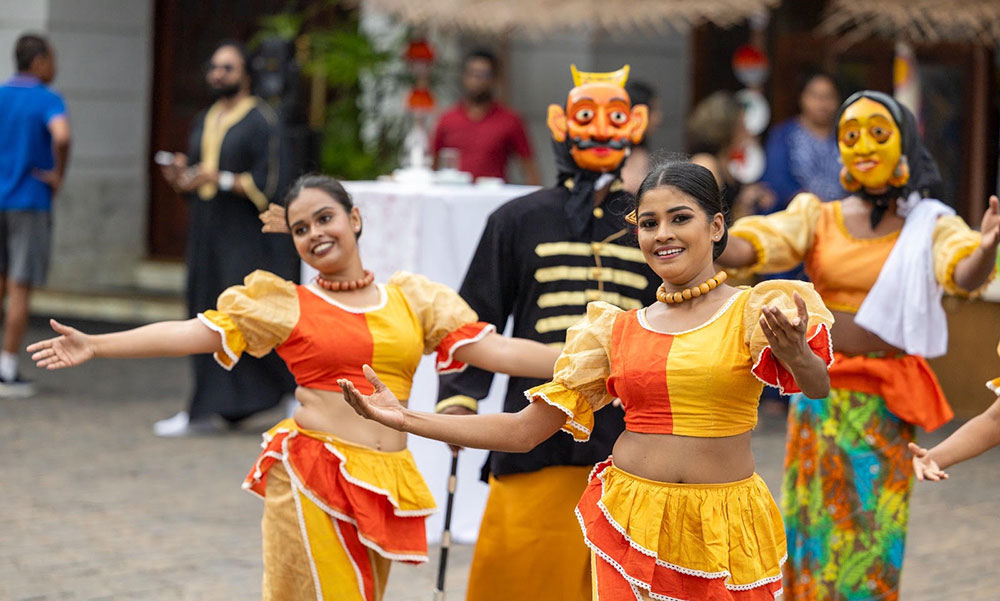
Mount Lavinia Hotel, known as “Galkissa Maha Hotalaya had thier “Avurudu Maha Gedara” celebration for the 2025 Sinhala and Tamil New Year. This year’s festivities were spectacular, with the iconic Chef Publis Silva at the helm of the culinary offerings.
The concept of “Avurudu Maha Gedara” – the grand ancestral home where families gather during New Year – perfectly embodies Mount Lavinia Hotel’s role as a cultural cornerstone in the community. Just as in the traditional village “Maha gedara” welcomes extended families, the historic hotel opens its doors to all Sri Lankans and visitors wishing to experience authentic New Year traditions.
“Avurudu Maha Gedara at Mount Lavinia Hotel is more than just a celebration – it’s our way of preserving and sharing Sri Lanka’s rich cultural heritage,” says Anura Dewapura, Chief Operating Officer of Mount Lavinia Hotel Group. “We take pride in creating a space where families and friends can come together to experience the joy and traditions of the New Year in an authentic setting that honors our collective past while creating new memories.”
Grand Kavili Kade opening and Avurudu market
The celebrations kicked off with the grand opening of the Kavili Kade (sweetmeat shop) on Sunday, April 6th at 4:30 PM. Visitors were treated to a vibrant cultural spectacle featuring traditional dancing, music, games, and dramatic performances. Distinguished guests including corporate partners, business associates, ambassadors, and media representatives attended this colorful inauguration.
The hotel’s courtyard was transformed into an eco-friendly Avurudu Market, showcasing special New Year items, homeware, and decorative pieces. Following the grand opening, the Kavili Kade will welcome guests daily from 10 AM to 8 PM until April 13th.
Exquisite Kavili hampers
For those looking to bring the flavors of Avurudu home, Mount Lavinia Hotel has curated three distinctive kavili hampers named after beloved Sri Lankan flora:
The premium Erabadu Hamper – the most comprehensive sweetmeat collection
The Ehela Hamper – a delightful mid-range offering
The Bakmee Hamper ) – a perfect introduction to traditional treats
Each hamper can be delivered directly to your doorstep, making them ideal both for family celebrations and as meaningful gifts during the New Year season.
“Feast of the Nation” – A Culinary Journey Across Sri Lanka
On Avurudu Day, Mount Lavinia Hotel will host its renowned “Feast of the Nation” lunch buffet, celebrating Sri Lanka’s diverse culinary heritage. At , this extraordinary buffet transcends ethnic boundaries, offering a comprehensive journey through the island’s rich culinary landscape. The feast features authentic dishes from every corner of Sri Lanka, bringing together the distinct flavors and cooking traditions that represent the country’s multicultural identity in one magnificent spread.
“The Avurudu celebration at Mount Lavinia Hotel represents the true spirit of Sri Lankan unity,” Dewapura continued. ” Through our traditional foods, we honor the cultural tapestry that makes our nation so special.”
Mount Lavinia Hotel’s “Avurudu Maha Gedara” welcomes Sri Lankans of all ages and backgrounds to experience the rich traditions of the New Year in the magnificent setting of this historic landmark.
For reservations and inquiries, contact Mount Lavinia Hotel at 0112 711 711.
Life style
Celebrate Avurudu in grand style
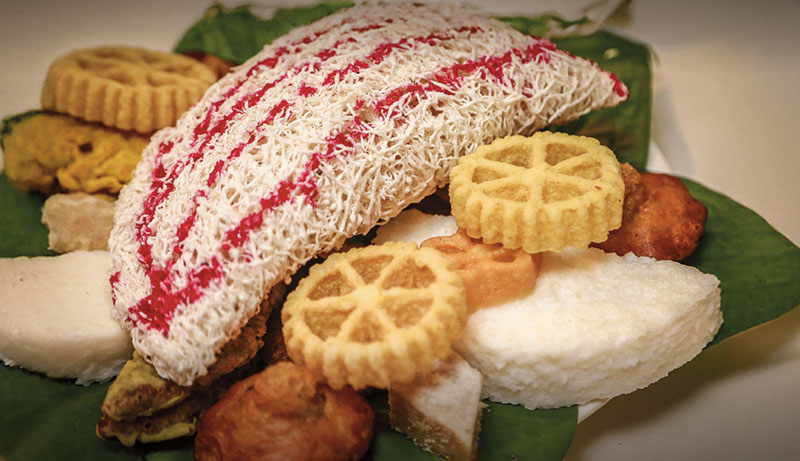
This April, Cinnamon Grand Colombo brings the joyous essence of Avurudu alive with a line-up of delightful culinary experiences, cultural festivities, and memorable moments for the whole family. Here’s how you can celebrate the Sinhala and Tamil New Year with flavour, tradition, and warmth said the press release.
New Year vibes
The release said experience the sights, sounds, and smells of a truly Sri Lankan New Year from 12–15 April 2025, starting from 5 PM onwards at the Lobby.
Watch live demonstrations of traditional sweetmeats being made, like kawum and kokis, and enjoy the rhythmic beats of raban drums as the hotel lobby transforms into a celebration of Avurudu culture.
Lobby – Cinnamon Grand Colombo
12–15 April, from 5 PM onwards
Call +94 11 247 3494 for details
Celebrate Avurudu Tradition and taste at Nuga Gama
On 14 April 2025, step into a truly authentic village-style Avurudu celebration at Nuga Gama. Starting at 8 AM, guests can enjoy a lavish Kavili Table and Lunch Buffet filled with traditional sweets and festive Sri Lankan dishes.
There’ll also be Avurudu games and vibrant activities to keep the whole family entertained.
Life style
Celebrate Sinhala and Tamil New Year at Sun Siyam Pasikudah’s Festival of the Sun
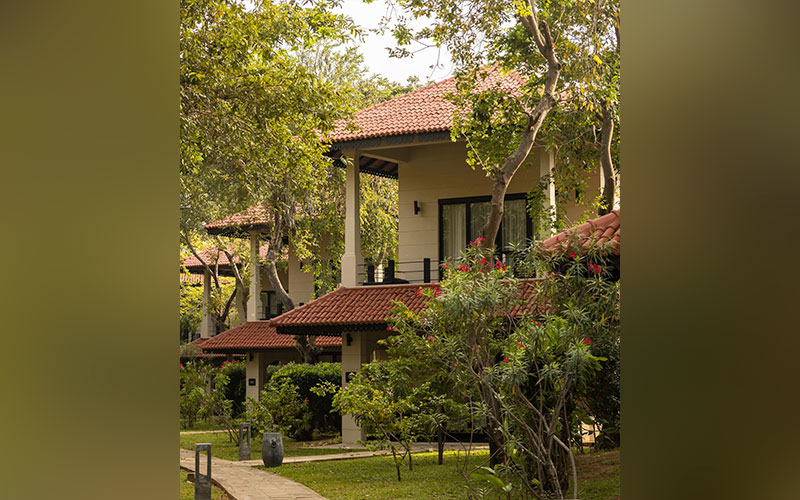
This Sinhala and Tamil New Year, step away from the ordinary and embrace the spirit of Avurudu at Sun Siyam Pasikudah with the joyous rhythms of tradition, community, and coastal serenity, under the vibrant theme, Festival of the Sun said a press release
Set along the golden shores of Pasikudah, the luxury five-star beach resort transforms into a festive haven where timeless rituals meet joyful recreation. From traditional ceremonies to fun-filled family games, guests are promised an unforgettable experience that captures the heart of Sri Lankan heritage, celebrating the essence of togetherness, gratitude, and renewal release said.
As the sun rises to mark the dawn of the New Year, guests will witness the symbolic milk boiling ceremony—a sacred ritual signifying prosperity and new beginnings. The preparation of the Kavili Mesaya, or traditional sweet table, will follow—featuring a colourful spread of mouthwatering Avurudu treats like kokis, mung kavum, aluwa, and konda kavum. The celebration continues with a ceremonial oil lamp lighting, setting the tone for a day rooted in cultural elegance and island warmth.
The Kids’ Corner is all set to light up with playful delights such as Breaking Balloons and Placing the Eye on the Elephant, promising giggles and memories for the little ones. Families and groups can bond over light-hearted yet lively games including Fill the Bottle by Hand, Sack Races, and the ever-popular Musical Chairs—guaranteed to spark friendly competition and lots of laughs.
For those seeking a thrill, competitive events like Tug of War (Ladies vs Gents), Pillow Fight, and the classic Blindfolded Pot Breaking are sure to bring out the festive spirit in full force.
While the Avurudu festivities steal the spotlight, Sun Siyam Pasikudah continues to charm guests with its signature blend of tropical luxury and authentic Sri Lankan hospitality.
-
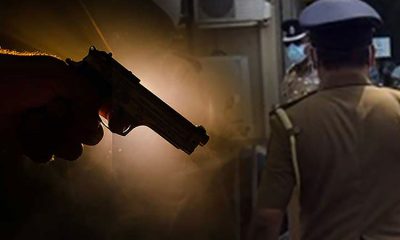
 News3 days ago
News3 days agoSuspect injured in police shooting hospitalised
-

 Features4 days ago
Features4 days agoRobbers and Wreckers
-

 Features6 days ago
Features6 days agoSri Lanka’s Foreign Policy amid Geopolitical Transformations: 1990-2024 – Part III
-
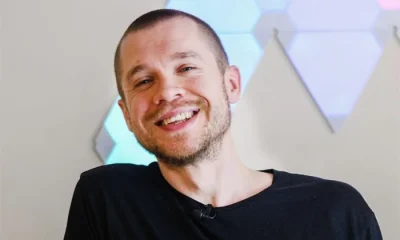
 Midweek Review6 days ago
Midweek Review6 days agoInequality is killing the Middle Class
-
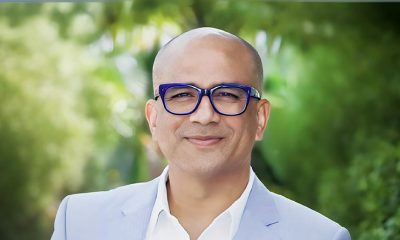
 Business3 days ago
Business3 days agoSanjiv Hulugalle appointed CEO and General Manager of Cinnamon Life at City of Dreams Sri Lanka
-
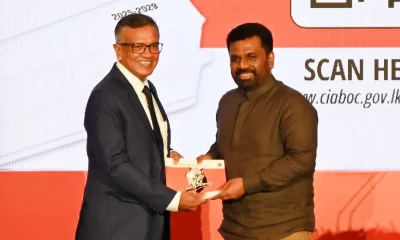
 Business5 days ago
Business5 days agoNational Anti-Corruption Action Plan launched with focus on economic recovery
-

 Features2 days ago
Features2 days agoLiberation Day tariffs chaos could cause permanent damage to US economy, amid global tensions
-

 News6 days ago
News6 days agoIChemC signs MoU with KIIT, India


